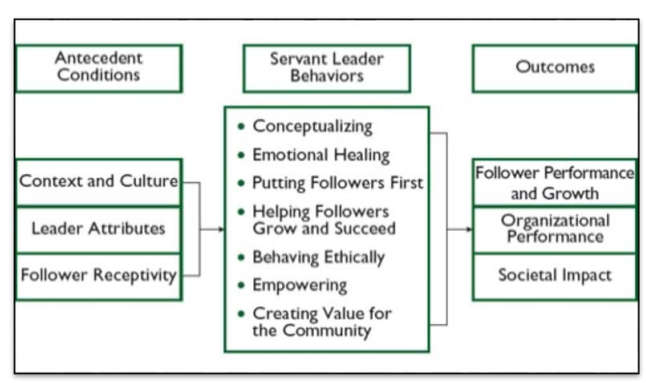This essay aims to explain the concepts of followership and servant leadership. The first refers to the ability to follow orders given by an authority figure, in this case, a military leader. The second is a leadership strategy aimed at benefiting subordinates while exercising control over their team, of which they are the commander. These two concepts are closely tied together but opposed to each other.
To begin with, the concept of followership is understood by most people, and it is an integral part of the military. It cannot function without a hierarchy of followership, with trainees and new people at the bottom and seniors and generals at the top. This hierarchy is crucial because it is key to exercising strict obedience within the army. To be able to complete different types of missions and tasks, the trainees need to follow orders and specific instructions; otherwise, they will face failure. For this reason, the military has a strict structural hierarchy based on the principles of followership and leadership.
There are many different types of leadership, and one of them is servant leadership. According to Hall (2017), it is a type of leadership where the commander specifically prioritizes the servitude of his followers above their own gain. This type of leadership is different from toxic leadership, which Hall (2017) outlines as having “adverse effects on subordinates, the organization, and mission performance” (p.7). Toxic leaders have a disregard for the general well-being of their followers and are motivated by the benefits that arise from their leadership position. Servant leaders are diametrically opposed to toxic leaders; however, it is important to understand the principles upon which they operate. Hall (2017) explains the attributes that describe a servant leader: the desire to serve others, emotional intelligence, moral maturity, prosocial identity, core self-evaluation, and low narcissism. Each of these qualities varies from leader to leader, but a servant leader requires all of them for a productive military environment.
A desire to serve others is a key element of servant leadership. Serving can mean catering to followers needs, support of their subordinates, and providing aid. Emotional intelligence and moral maturity are similar – a leader must evaluate the emotional needs of their followers and hold themselves up to suitable moral standards. Prosocial identity is the ability of the leader to communicate with their subordinates and serve them. Self-evaluation and low narcissism are the qualities that prevent abuse of power through self-reflection and compassion.
A fundamental component of followership is receptivity, in contrast to serving of servant leadership. This leadership model cannot be effective with non-receptive followers. Hall (2017) writes: “Followers who do not want to work with servant leaders see them as micromanagers” (p.19). These followers are not productive while guided by a servant leader; they do not wish to connect with their commander and be served. However, Hall (2017) explains that when followers who display high receptiveness are matched with a servant leader, the group’s overall performance increases. The graphical organizer below shows how servant leaders behaviors affect the group performance:

It is evident that servant leadership positively affects a receptive follower base.
To conclude, this essay examined the fundamental elements of servant leadership and followership. It explained the overlap of these two concepts and compared this leadership style with toxic leadership. This essay contrasted the servant leader and their followers – the former serves while the latter receives. The degrees of follower receptivity and how they affect the performance of servant leadership style was also described. This essay concluded by explaining that servant leadership is best paired with high follower receptivity because it leads to improved group performance.
Reference
Hall, N.C. (2017). Improve organizational effectiveness, culture, and climate through servant leadership. US Army Command and General Staff College Fort Leavenworth United States.
